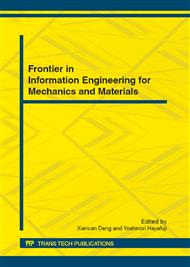[1]
Y. Lmai, L.A. Lasky, S.D. Rose, Sulphation requirement for GlyCAM-1, an endothelial ligand for L-selectin, Nature 361(1993) 555-557.
DOI: 10.1038/361555a0
Google Scholar
[2]
T.V.P. Bliss, G.L. Collingridge, A synaptic model of memory: long-term potentiation in the hippocampusNature 361(1993) 31-39.
DOI: 10.1038/361031a0
Google Scholar
[3]
G. Wulff, J. Schmid, T. Venhoff, The synthesis of polymerizable vinylsugars, Macromol. Chem. Phys. 197(1996) 259-274.
DOI: 10.1002/macp.1996.021970120
Google Scholar
[4]
V. Ladmiral, E. melia, D.M. Haddleton, Synthetic glycopolymers: an overview, Eur. Polym. J. 40(2004) 431-449.
DOI: 10.1016/j.eurpolymj.2003.10.019
Google Scholar
[5]
S.G. Spain, M.I. N.R. Cameron, Recent advances in the synthesis of well-defined glycopolymers, J. Polym. Sci. Part A: Polym. Chem. 45(2007) 2059-2072.
DOI: 10.1002/pola.22106
Google Scholar
[6]
K. Yamada, M. Minoda, T. Miyamoto, Amphiphilic block and statistical copolymers with pendant glucose residues: Controlled synthesis by living cationic polymerization and the effect of copolymer architecture on their properties, J. Polym. Sci. Part A: Polym. Chem. 39(2001) 459-467.
DOI: 10.1002/1099-0518(20010215)39:4<459::aid-pola1014>3.0.co;2-e
Google Scholar
[7]
S. Loykulnant, M. Hayashi, A. Hirao, Anionic living polymerization of styrene derivatives containing acetal-protected monosaccharide residues, Macromolecules 31(1998) 9121-9126.
DOI: 10.1021/ma9811371
Google Scholar
[8]
S. Iyer, S. Rele, G. Grasa, S. Nolan, E.L. Chaikof, Synthesis of a hyaluronan neoglycopolymer by ring-opening metathesis polymerization, Chem. Commun. 13 (2003) 1518-1519.
DOI: 10.1039/b301734f
Google Scholar
[9]
K. Aoi, K. Tsutsumiuchi, M. Okada, Glycopeptide synthesis by and alpha-amino acid N-carboxyanhydride (NCA) method: ring opening polymerization of a sugar-substituted NCA, Macromolecules 27(1994) 875-877.
DOI: 10.1021/ma00081a040
Google Scholar
[10]
K. Matyjaszewski, T.P. Davis, Handbook of radical polymerization, Wiley-Interscience, New York, 2002, Chapters 8-14.
Google Scholar
[11]
S. Strandman, P. Pulkkinen, H. Tenhu, Effect of ligand on the synthesis of star polymers by resorcinarene-based ATRP Initiators, J. Polym. Sci. Part A: Polym. Chem. 43(2005) 3349-3358.
DOI: 10.1002/pola.20804
Google Scholar
[12]
K. Ohon, Y. Tsujii, T. Fukuda, Synthesis of a well-defined glycopolymers by atom transfer radical polymerization, J. Polym. Sci. Part A: Polym. Chem. 36(1998) 2473-2481.
DOI: 10.1002/(sici)1099-0518(199810)36:14<2473::aid-pola5>3.0.co;2-u
Google Scholar
[13]
K. Matyjaszewski, D.A. Ship, J.L. Wang, T. Grimand, T.E. Pattern, Utilizing halide exchange to improve control of atom transfer radical polymerization, macromolecules 31(1998) 6836-6840.
DOI: 10.1021/ma980476r
Google Scholar


